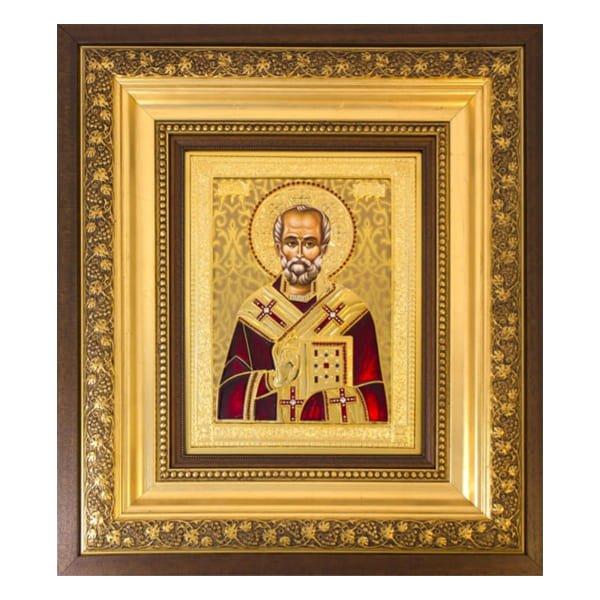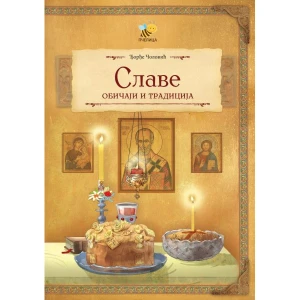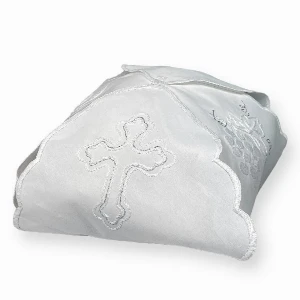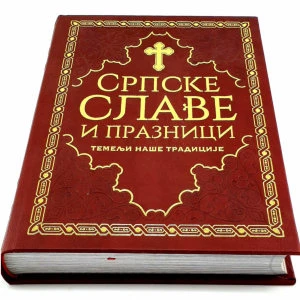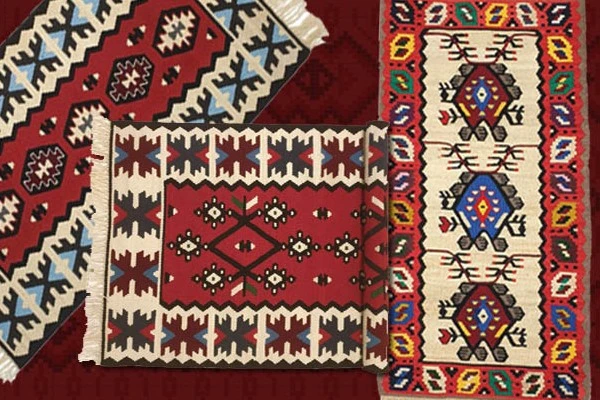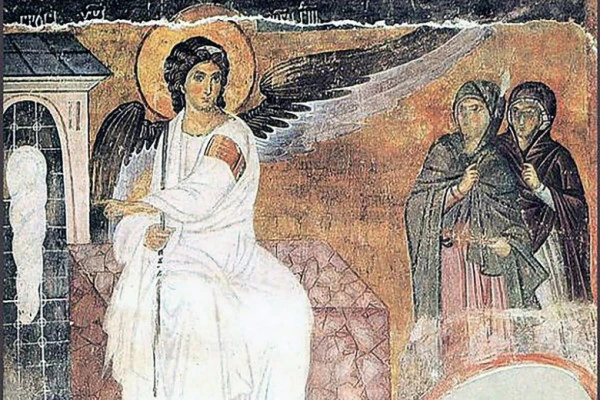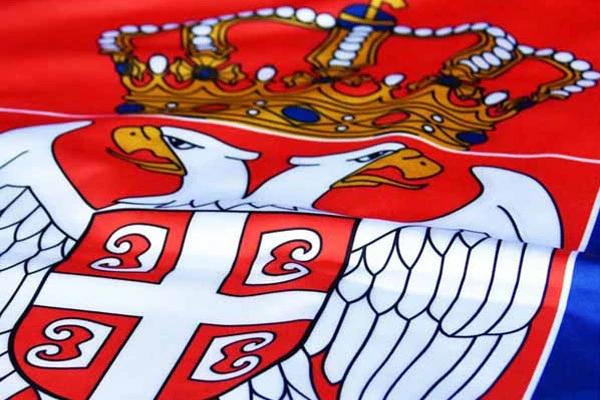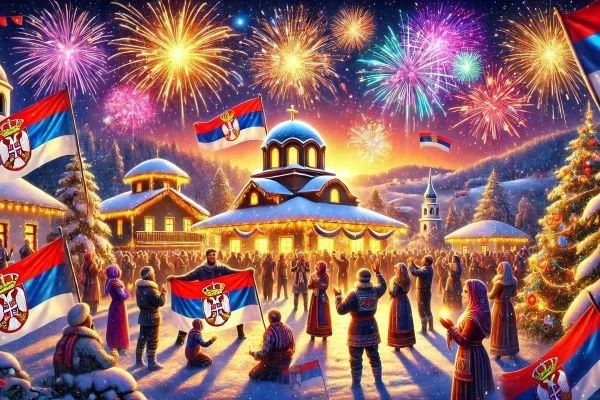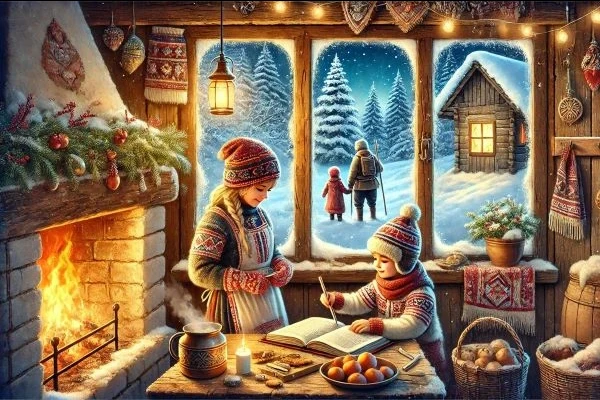SERBIAN SLAVA CELEBRATIONS IN DECEMBER
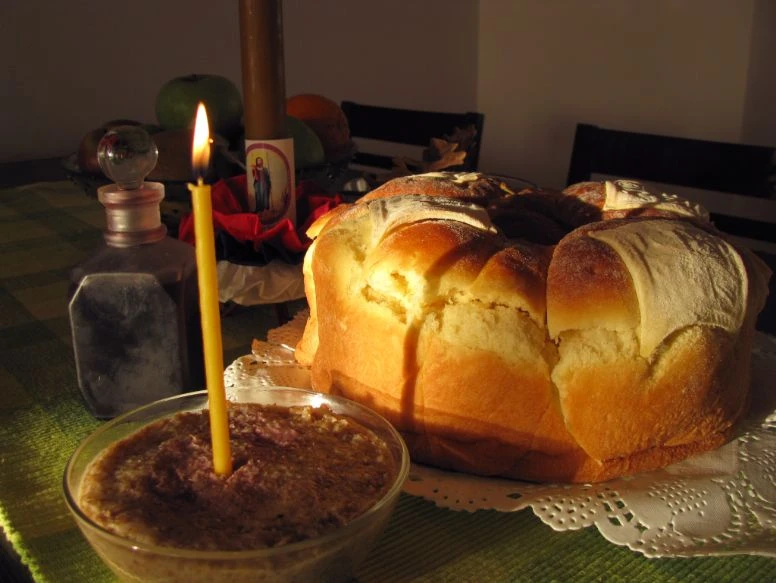
Perhaps this is a great time to remind ourselves that the slava, first and foremost, is a spiritual celebration, which reminds us of the day when our ancestors received the saving Christian faith, and to spend that day in prayer.
And there are many of those prayerful, solemn days among Serbs during autumn and winter. And in December, the last month of the year that announces the New Year and the Christmas holidays, slava feasts follow.
December 4 - VAVEDENJE
Vavedenje, or as it is also called The Presentation of the Blessed Virgin Mary is marked with a red letter in the Orthodox calendar and is one of the 12 biggest and most respected Christian slava's.
It is celebrated as a remembrance of the day when the Mother of God, accompanied by her parents Joachim and Anna, was first introduced to the temple of God. The Virgin Mary was brought to Jerusalem as a three-year-old child and brought to the temple.
Today's holiday is the slava of the Hilandar monastery. Although the Greek Orthodox Church celebrates the Vavedenje on according to the new calendar (November 21), the Day of the Mother of God is traditionally celebrated on the entire Holy Mountain on December 4th, and the central liturgy is held by Serbian priests from Hilandar.
According to tradition, the Mother of God is the only woman who was ever allowed to enter the soil of the Holy Mountain, during her missionary journey upon her return from the Holy Land. Because of that, she is also the protector of the entire Holy Mountain, that is, the Greek peninsula of Athos.
The Mother of God is considered the protector of women who give birth and there are various folk beliefs related to the power of the icons on which she is represented. The Presentation of the Blessed Virgin Mary is celebrated by mothers and infertile women, and many receive communion on this day, it is believed that the Mother of God answers all prayers on this day.
December 9 - Saint Alypius the Stylite
Although December 9 is not marked with a red letter in the calendar of the Serbian Orthodox Church, Saint Alypius the Stylite is highly respected by the people, and many families celebrate this slava. Born in Adrianople, he wanted to live in prayer and solitude since childhood.
According to tradition, Alypius lived for 120 years and died in 640. during the reign of Emperor Heraclius. The head of his relics is preserved in the Kutlumuski monastery on the Holy Mountain. It is often frescoed in the temples of our Church, and one of the frescoes is also in the narthex of the Patriarchate of Peja.
This saint overcame almost all hermits by strict fasting and suffering various misfortunes. It is believed in our people that this saint saved the people from the plague and that they rejected many other diseases. Therefore, on that day, you should go to church as early as possible in order to be healthy all year round. Saint Alypius on the icon is represented in the ascetic, a hermit's suit sitting on his pillar. He is the protector of cattle, so beef is avoided on this day.
December 13 - SAINT ANDREW
Every December 13, the Serbian Orthodox Church celebrates the feast of St. Andrew the First Called, the first follower and first apostle of Christ who suffered on the cross because of his devotion to the New Testament faith.
In his "Prologue", Bishop Nikolaj Velimirovic described the suffering on the cross and the first apostle who did not give up the Christian teachings to the people who came to worship him until his last breath.
Saint Andrew the First-Called is also celebrated as his protector by the home of Karadjordjevic.
The Karadjordjevic family has been celebrating this slava since the time of the First Serbian Uprising, and it was introduced by the leader Karadjordje. Earlier, it was celebrated as a national holiday, because during Karadjordje's time, Belgrade was liberated from the Turks on that day.
Passing through many countries, Andrew also visited the Peloponnese, where in the Achaean city of Patras, he healed a man named Sosia from a serious illness, after which most of the inhabitants of that city converted to Christianity.
According to folk beliefs, St. Andrew is considered the protector of large animals. He talks to them, and they are submissive to him. Bears used to celebrate St. Andrew's Day, believing that this saint tames bears like dogs, and that he travels the world riding on this beast.
December 19 - SAINT NICHOLAS
Saint Nicholas of Myra, the protector of the poor and sailors, children and students, is known throughout Christianity as a saint and protector. Among Serbs, St. Nicholas is one of the most important saints, whose slava is celebrated by the largest number of candlesticks, and the little ones perceive him as a cheerful fat man in a red cap who brings gifts to good children.
The mother of Saint Nicholas could not have children, so it was a real miracle when she found out that she was pregnant. During her pregnancy, she became very ill, but as soon as Nikola was born, mother Nona miraculously recovered overnight. According to legend, he refused to accept breast milk every Wednesday and Friday, which are considered holy days when fasting.
It is generally known that this saint is a great protector of children, but according to an old French song, he has the power to revive the dead. According to song, Saint Nicholas entered the butcher shop whose owner killed three boys and hid their massacred bodies in barrels in the basement. Then he revived the unfortunate boys, but he also gave the butcher a chance to repent and save his soul.
He was buried in Turkey, where his remains were kept for a couple of hundred years, and in 1087. seventy pirates from Italy stole the relics of this saint and transferred them to Bari, Italy. It is little known that a church in France has a bone from his finger, and in a monastery in Germany there is a golden statue that holds the real tooth of St. Nicholas.
Many have tried to explain the prevalence of the cult of St. Nicholas among Serbs, but the real truth is that Serbs learned about the meaning and virtues of this religion from examples from the life of St. Nicholas, and eventually adopted him as their protector. It is completely clear how the saying that "half of Serbia celebrates this slava, and the other half goes to the slava as guests" came about.
Knowing that Saint Nicholas is the protector of the largest number of Serbian families, SERBIANSHOP made sure to offer a valuable icon of Saint Nicholas on his website, in the icon sales department, handmade in an art workshop, with gilding.
Related products
Read also
How to wash a pirot carpet - 5 steps to a perfectly clean and fragrant carpet
Traditional Serbian carpets are a valuable family heirloom. They refine and…
White angel - the purest symbol of the Serbian people
Frescoes represent an artistic segment of religion and as such occupy a special…
Serbian flags throughout history - What all Serbian flags looked like and what distinguishes them
A flag is much more than a piece of cloth – it is a symbol of a nation's identity,…
Who was Saint Sava and what was his contribution?
"Saint Sava: A Beloved Serbian Saint with a Rich Legacy and Cultural Significance"
…Serbian New Year: Tradition, Customs and How to Celebrate it
The Serbian New Year, also known as the Orthodox New Year, is celebrated on…
Gifts Inspired by Serbian Culture: Authentic Ideas for the Holidays
The holidays are a time of giving, and finding the perfect gift is often a challenge.…
Traditional Serbian Christmas Customs: How to Cultivate Them in Modern Times?
Christmas is the most joyous holiday in Orthodox Christianity, a time when families…
How to Bring the Spirit of Orthodox Tradition into Your Home This Winter?
Winter is the perfect time to bring warmth, togetherness and the spirit of Orthodox…
Serbian Souvenirs: Perfect New Year's Gifts for All Tastes
New Year is the time of giving, and what is more beautiful than a gift that…
How to stay productive and not waste an entire day on Black Friday shopping
Black Friday is a day full of amazing discounts, but it can easily become exhausting…
Folk Beliefs and Customs for Saint Aranđel - Assembly of Holy Angels
Saint Michael the Archangel, who is celebrated…
Folk Beliefs and Customs for Đurđić - Glory of St. George
Đurđić, the feast of St. George, celebrated on November 16, is one of the most…

Apply for newsletter
Sign up for the Serbianshop newsletter and get a 10% discount.


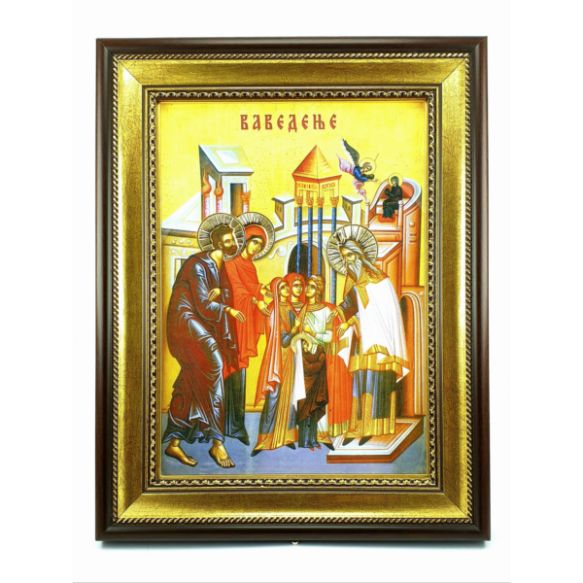
.jpg)
